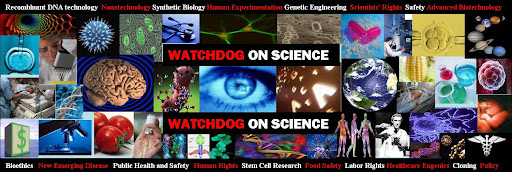Experts say US needs better tracking of lab accidents
Robert Roos News Editor
http://www.cidrap.umn.edu/cidrap/content/bt/bioprep/news/jan0512labsafe.html
Jan 5, 2012 (CIDRAP News) – In releasing safety guidelines today for workers in medical diagnostic laboratories, a panel of experts convened by the US Centers for Disease Control and Prevention (CDC) said the nation needs a system for "nonpunitive" surveillance and reporting of laboratory-acquired infections (LAIs).
But the first four of those routes account for less than 20% of infections, the experts found. Studies over the years have shown that in many cases no specific exposure events were identified, which suggests that unsuspected infectious aerosols may play a large role in LAIs.
The guidelines address all functions of human and animal diagnostic labs, including microbiology, chemistry, hematology, and pathology. They include a specific section addressing veterinary lab issues not shared by human labs.
Recommendations intended for all laboratories include "use of Class IIA2 biological safety cabinets that are inspected annually; frequent hand washing; use of appropriate disinfectants, including 1:10 dilutions of household bleach"; risk assessments for many activities; written safety protocols that address chemical-related risks; the need for negative airflow into labs; and lab areas in which use of gloves is optional or recommended.
Each section of recommendations was reviewed by CDC experts and relevant national organizations, such as the College of American Pathologists, American Society for Microbiology, American Clinical Laboratory Association, Association of Public Health Laboratories, and several others, the report says.
CDC. Guidelines for Safe Work Practices in Human and Animal Diagnostic Laboratories: recommendations of a CDC-convened, Biosafety Blue Ribbon Panel. MMWR 2012 Jan 6;61(01):1-101 (supplement)
Jan 5, 2012 (CIDRAP News) – In releasing safety guidelines today for workers in medical diagnostic laboratories, a panel of experts convened by the US Centers for Disease Control and Prevention (CDC) said the nation needs a system for "nonpunitive" surveillance and reporting of laboratory-acquired infections (LAIs).
Except for requirements in the CDC's Select Agent Program, which covers certain dangerous biological agents and toxins, such as Bacillus anthracis, there is no national system for reporting medical laboratory exposures and resulting infections, says the lengthy report.
"Because of the lack of an official surveillance mechanism for reporting LAIs and because of the fear of punitive action by an oversight agency if injuries are reported, the data needed to determine the extent and cause of LAIs are unavailable," the report states. "In addition, there is a dearth of science-based insights on prevention of LAIs."
The panel calls for a "voluntary, nonpunitive surveillance and reporting system with the potential for anonymity to be implemented in the United States."
The comments are part of Guidelines for Safe Work Practices in Human and Animal Diagnostic Laboratories, which was released by the CDC as a supplement to Morbidity and Mortality Weekly Report. It was prepared by a "Biosafety Blue Ribbon Panel" of experts from the CDC and a number of university and private labs.
The report is intended to supplement the fifth edition of Biosafety in Microbiological and Biomedical Laboratories, which was not specifically designed to address the routine operations of diagnostic labs in human and veterinary medicine.
The new guidelines are not designed to replace existing guidance, but have the general aims of improving safety in clinical labs, encouraging lab workers to think about safety issues they might not have considered, and encouraging them "to create and foster a culture of safety." The US Bureau of Labor Statistics estimates that workers in human and animal diagnostic labs number about 500,000, the report says.
Given the shortage of solid data, the number of LAIs is unknown, but "Laboratory exposures occur more often than is generally suspected," the report says. It notes that hepatitis B has been the most frequent lab-acquired viral infection, with a rate of 3.5 to 4.6 cases per 1,000 workers, which is two to four times the rate in the general population.
The five most common ways that lab workers acquire infections on the job, according to the guidelines, are:
- Parenteral inoculations with syringe needles or other contaminated sharps
- Pills and splashes onto skin and mucous membranes
- Ingestion or exposure through mouth pipetting or touching mouth or eyes with fingers or contaminated objects
- Animal bites and scratches (research laboratories or activities)
- Inhalation of infectious aerosols


No comments:
Post a Comment
POST COMMENT: